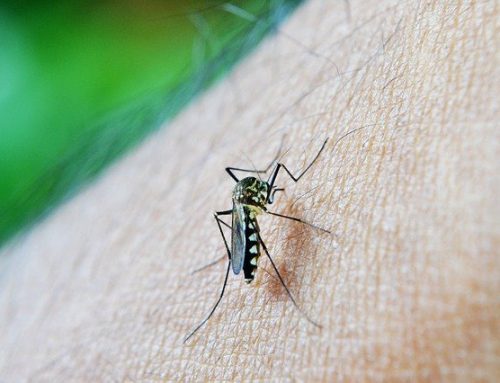The very idea of a six-month-old baby feeding herself sounds quite revolutionary. It’s the sort of thing you’d expect a child prodigy to accomplish. Surprisingly, it’s not. Recent discoveries by many ambitious, eager parents have led to believe that your baby is perfectly capable of inserting a bite of softened food into the crevice between her jaws. There is a whole movement behind infant-led weaning, as it is called. Many parents swear up it and consider it to help their babies develop faster.
What is baby-led weaning?
Your baby is encouraged to feed herself, rather than be fed purees and mashed food. She is made to sit upright (with or without support) and is offered big chunks of cut fruits or finger food in a bowl or plate within her reach. She then lifts up the food puts it in her mouth and chews. Your baby should eat only when she is hungry, otherwise, she won’t be motivated to pick up the food. Let her decide when to eat and how much to eat, so she can stop by herself when she is full.
It can be a slow process that requires a lot of patience and persistence from the parents. Be warned that this is a terribly messy process. But it’s worth it, as it engages your child’s natural curiosity, allowing her to explore colours, textures and tastes of the food offered. It helps to develop a healthy relationship with food.
Also, like in traditional weaning, breastmilk is still considered the primary source of nutrition.
Pointers for baby-led weaning
- If your baby is struggling to pick up the food, offer a soft, safe fork or spoon, that fits in her tiny hand.
- The food slices should also be the right size for her to pick up. Till her pincer grasp is fully developed, offer a large chunk of food that can be grabbed by hand. Once her fine motor skills improve, you can offer smaller bite-size foods.
- All food must be room temperature, so as to avoid uncomfortable hot or cold sensations uncomfortable hot or cold sensations in the mouth.
- Baby-led weaning foods shouldn’t include any foods that are hard or circular in shape. Items like grapes, nuts and popcorn can be considered choking hazards as they can block the air passage. Either avoid or cut them into smaller, thinner or longer pieces.
- Don’t confuse gagging with choking. The gag reflex is normal and even helpful.
- Observe your baby through the meal. If more food is going on the floor than in her mouth, she is either full or doesn’t like the meal provided.
- Do not try to force-feed. Allow your baby to select the food from the plate and decide on the amount she wants. When she stops eating, don’t try to get her to eat more.
Follow these general rules for feeding.
Some baby-led weaning starter food:
- Cut fruits like papaya, apples, bananas, watermelon, avocado, mango
- Slices of cooked veggies like carrots, pumpkin, sweet potato, green beans, broccoli
- Cooked pasta
- Diced hard-boiled eggs
- Paneer cubes
- Cooked chicken
For more food ideas about the BLW method, check out this cookbook. To hear from other parents interested in BLW, visit this Facebook group.
The pros of the baby-led weaning method
- Helps develop fine motor skills along with hand-eye coordination. Your child will exercise the muscles in the hand, especially the pincer grip while picking up food repeatedly.
- Your child is also able to self regulate her appetite. She can stop eating when full, rather than be fed extra food.
- This method is a time saver. You don’t have to prepare the food until it reaches a particular texture or consistency. You don’t even have to or feed your baby.
- You can eat with your baby, establishing family meal times early on. What’s more, your baby will watch you pick up the food and eat, and imitate your actions.
- Your baby is more willing to try new foods and can develop an adventurous palate. This is due to early exposure to different textures and tastes as opposed to being spoon-fed mashed food. Chances of your baby becoming a fussy eater are low.
- If your baby is teething, the chewing action will help comfort her swollen, painful gums.
The cons of the baby-led weaning method
- Your baby might not always be up to feeding herself. There will be days where there is resistance.
- Prepare yourself for a mess. The time saved in cooking mashed food might go in cleaning up crevices in your living room.
- Can be quite frustrating for a parent to wait which the child feeds herself and not be tempted to hurry up the eating by getting involved.
- This method is ideal when you’re home, but can be a problem when you’re outside or travelling. You’ll have to organised feeding time at appropriate moments, and figure out ways to minimise the mess while eating.
- Your baby needs more iron and zinc in her diet after six months. However, she may not like to eat iron-rich foods like green veggies, or not eat enough. You’ll have to keep an eye on her intake.
- On days when your baby is overtired or too hungry, she may not be willing to feed herself and will instead throw tantrums out of frustration.
Conclusion
The baby-led weaning method can help your little one make the transition to proper solid food a lot quicker and easier. However, make sure your baby is at least six months before you start this process. Also, patience is key. You’re opening up a whole new world before your baby. It might take a little time for her to fully appreciate all that you offer.






Leave A Comment